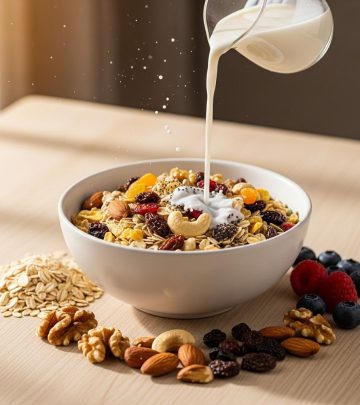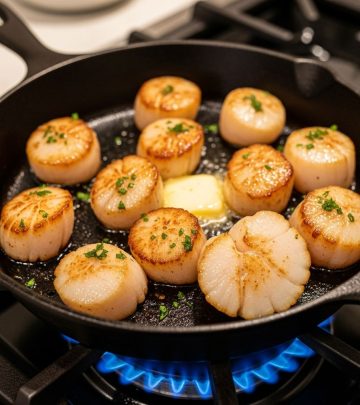Gnocchi Recipes: Delicious Homemade Gnocchi Ideas
Master the art of making gnocchi with these delicious homemade recipes and cooking techniques.

Gnocchi Recipes: Your Complete Guide to Homemade Gnocchi
Gnocchi, the beloved Italian dumpling, represents one of the most satisfying and versatile dishes you can prepare in your own kitchen. These soft, pillowy parcels of potato goodness can be elevated with countless sauces and preparations, making them perfect for weeknight dinners or impressive dinner party entrees. Whether you’re a seasoned cook or just beginning your culinary journey, gnocchi recipes offer something for everyone. The beauty of gnocchi lies not only in their delicate texture but also in the endless creative possibilities they provide for sauce pairings and ingredient combinations.
Understanding Gnocchi: The Basics
Before diving into specific recipes, it’s essential to understand what makes gnocchi special. Traditional gnocchi are made from a simple combination of potatoes, flour, eggs, and salt. The magic happens in the technique—proper handling of the dough, correct cooking times, and the right texture are what separate mediocre gnocchi from exceptional ones. The key to success lies in not overworking the dough and using the right potato varieties. Russet potatoes are preferred because of their lower moisture content, which results in a lighter, less gummy final product.
Classic Potato Gnocchi with Butter and Sage
The most traditional preparation remains one of the most delicious. Classic potato gnocchi showcases the delicate flavor of the dumpling itself, allowing the subtle potato taste to shine through. This timeless recipe begins with perfectly cooked russet potatoes that are riced while still warm. The warm potatoes are then gently combined with flour, salt, and beaten egg to create a soft dough. The dough is divided into portions, rolled into thin ropes, and cut into individual pieces. Each piece is traditionally rolled against the tines of a fork or a wooden paddle to create ridges that help catch sauce.
The sauce for classic gnocchi is elegantly simple: butter browned until nutty, combined with fresh sage leaves. Some variations include the addition of Parmesan cheese for extra depth and richness. The gnocchi are cooked in boiling salted water until they float to the surface, typically taking only two to three minutes. This brief cooking time ensures they remain tender rather than becoming dense and heavy.
Sweet Potato Gnocchi: A Modern Twist
For those looking to experiment beyond traditional recipes, sweet potato gnocchi offers a delightful alternative that brings subtle sweetness and vibrant color to the table. This variation works beautifully as part of an untraditional Thanksgiving menu or whenever you want to add a creative dimension to your meal. Sweet potato gnocchi maintains the same cooking principles as traditional versions but brings a unique flavor profile that pairs exceptionally well with brown butter and fresh herbs like thyme.
The preparation of sweet potato gnocchi begins similarly to potato versions, with the sweet potatoes cooked until tender and then riced to achieve the proper texture. The dough comes together with the same gentle handling and minimal kneading. When browning butter for sweet potato gnocchi, it’s important to start with a cold pan, gradually adding the butter and allowing it to brown slowly over medium heat. This careful approach prevents the butter from burning and ensures it achieves that perfect golden, nutty appearance and aroma. The result is a sophisticated dish that impresses diners while remaining surprisingly approachable for home cooks.
Gnocchi with Butter-Thyme Sauce
Thyme offers a more herbaceous complement to gnocchi compared to traditional sage preparations. This variation creates a restaurant-quality dish that’s entirely achievable in a home kitchen. The butter-thyme sauce is prepared by gently heating butter in a skillet over medium heat, allowing it to brown gradually until it develops a rich, nutty color. Fresh thyme leaves are added to the warm butter, infusing it with aromatic flavor without the intensity that would result from cooking the herbs too long.
The gnocchi themselves are prepared using standard techniques: boiling russet potatoes, ricing them while warm, combining them with flour, salt, pepper, and egg, then gently kneading until just combined. The dough is divided into four equal portions, with each piece rolled into a thin rope approximately half an inch in diameter. These ropes are cut into one-inch pieces and traditionally rolled against a fork or ridged paddle to create the characteristic grooves. These indentations serve a practical purpose—they help the sauce adhere to the gnocchi and create visual appeal.
Cooking the gnocchi requires boiling salted water and gently stirring the dumplings to prevent them from sticking. They cook very quickly, typically rising to the surface within about one minute and becoming fully tender within two to three additional minutes. Using a slotted spoon, the cooked gnocchi are transferred directly into the warm thyme butter, tossed to coat evenly, and served in shallow bowls topped with freshly grated Pecorino-Romano or Parmesan cheese.
Essential Techniques for Perfect Gnocchi
Mastering gnocchi requires understanding several critical techniques that separate success from disappointment. The first essential technique involves proper potato preparation. Potatoes must be cooked until completely tender, then immediately riced while still warm. Allowing potatoes to cool before ricing results in denser, heavier gnocchi. The ricing process breaks down the potatoes into uniform, fine pieces that combine smoothly with other ingredients.
Another crucial technique involves minimal dough handling. Unlike bread dough, which benefits from extensive kneading, gnocchi dough should be combined gently and kneaded only four or five times until the ingredients are just blended. Overworking the dough develops gluten, resulting in tough, chewy gnocchi rather than light, pillowy ones. Similarly, using the right amount of flour is critical—different potatoes contain varying moisture levels, so adjustments may be necessary, but using excessive flour will produce dense results.
The rolling and cutting process also demands care and technique. Creating uniform pieces ensures even cooking. Rolling each piece over a fork or ridged wooden paddle creates traditional grooves that catch sauce and contribute to authentic presentation. These grooves also help home cooks identify gnocchi as homemade rather than store-bought.
Finally, cooking temperature and timing are paramount. Boiling salted water should be at a rolling boil when gnocchi are added, and they should be stirred immediately to prevent sticking. The brief cooking time—typically two to three minutes from when they float to when they’re tender—requires attention to prevent overcooking.
Ingredient Variations and Substitutions
While traditional gnocchi rely on russet potatoes as their foundation, numerous variations exist using different ingredients. Sweet potatoes provide natural sweetness and distinctive color. Butternut squash creates a slightly sweet, earthy gnocchi perfect for autumn entertaining. Some creative cooks experiment with ricotta-based gnocchi, which are lighter and slightly different in texture but equally delicious.
Flour selections can also vary. All-purpose flour is standard, but some recipes incorporate small amounts of semolina flour for added texture and subtle nuttiness. Egg variations include both single-egg and egg-yolk-only options, with the latter producing slightly lighter gnocchi. Some recipes include grated cheese, nutmeg, or fresh herbs mixed into the dough for additional flavor dimensions.
Sauce Pairings for Gnocchi
The versatility of gnocchi shines brightest when considering sauce pairings. Beyond simple brown butter and herbs, gnocchi work beautifully with cream-based sauces, tomato preparations, pesto, and even light oil-based dressings. A classic Gorgonzola cream sauce creates rich elegance, while a simple tomato sauce celebrates the gnocchi themselves. Pesto offers bright, herbaceous flavors, and brown butter with sage provides timeless sophistication.
For those seeking lighter options, olive oil-based sauces with garlic and fresh vegetables provide bright, fresh flavors. Mushroom sauces, whether creamy or broth-based, complement gnocchi’s subtle potato flavor beautifully. The key to successful sauce pairings involves balancing flavors—delicate gnocchi pair best with sauces that complement rather than overwhelm them.
Common Mistakes to Avoid
Understanding common pitfalls helps ensure gnocchi success. Overworking dough remains the most frequent mistake, resulting in tough, dense results. Using cold potatoes or allowing them to cool before processing also compromises texture. Adding excessive flour to compensate for sticky dough creates overly thick, gummy gnocchi. Cooking gnocchi at temperatures below boiling or leaving them in water too long produces mushy results. Not stirring gnocchi immediately after adding them to boiling water causes them to stick together. Finally, skipping the resting period allows dough to remain warm and sticky, making it difficult to work with.
Preparing Gnocchi in Advance
One advantage of homemade gnocchi is their freezer-friendly nature. Raw gnocchi can be arranged on baking sheets, frozen until solid, then transferred to freezer bags for storage up to three months. Frozen gnocchi require no thawing before cooking—simply add extra time to the boiling water, typically three to five minutes instead of two to three. This convenience allows cooks to prepare gnocchi when time permits and cook them during busy weeknights.
Equipment and Tools
Creating perfect gnocchi requires minimal specialized equipment. A potato ricer is highly recommended for achieving proper texture, as it creates uniform, fine pieces that combine smoothly. A food mill, masher, or fork can substitute if a ricer isn’t available, though results may be slightly less refined. A wooden paddle with ridges is traditional for creating grooves, though a fork works equally well. A heavy-bottomed skillet for cooking sauce ensures even heating and prevents burning. Finally, a slotted spoon proves essential for transferring delicate cooked gnocchi without breaking them.
Frequently Asked Questions
Q: Why are my gnocchi gummy and dense?
A: This typically results from overworking the dough, using excessive flour, or cooking potatoes that weren’t completely dry. Ensure potatoes are riced while warm and handle the dough minimally.
Q: Can I make gnocchi without eggs?
A: Yes, though eggs help bind the dough. Egg-free versions work but may require slight texture adjustments and occasionally additional flour.
Q: How long do fresh gnocchi last in the refrigerator?
A: Fresh, cooked gnocchi keep for two to three days when stored in an airtight container. Raw gnocchi last one to two days refrigerated but freeze excellently for months.
Q: Can I use waxy potatoes instead of russet potatoes?
A: While possible, russet potatoes are superior due to their lower moisture content. Waxy potatoes contain more water, resulting in denser, potentially gummier gnocchi requiring more flour.
Q: What causes gnocchi to fall apart during cooking?
A: This usually indicates insufficient kneading or too much flour, creating fragile dough. Ensure adequate mixing and monitor cooking time carefully.
Q: How can I tell when gnocchi are done cooking?
A: Gnocchi are done when they float to the surface, then continue cooking for another two to three minutes until tender throughout. Test one by cutting it open to ensure it’s cooked through.
Conclusion
Gnocchi recipes represent an accessible entry point into Italian cooking, combining simplicity with sophistication. Whether you choose classic preparations with sage and butter, modern twists with sweet potatoes, or innovative sauce combinations, homemade gnocchi offer rewards that far exceed the modest effort required. By mastering fundamental techniques, understanding ingredient roles, and avoiding common mistakes, any home cook can create restaurant-quality gnocchi. The joy of serving tender, pillowy gnocchi tossed in flavorful sauce brings satisfaction that makes every careful step worthwhile. Start with traditional recipes, then experiment with variations to discover your personal favorites in this endlessly versatile dish.












